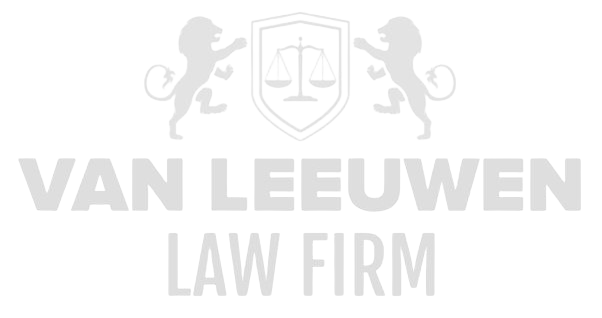The intensification of cross-border enforcement initiatives and the heightened expectations of regulatory authorities have created a complex landscape in which corporates are compelled to structure internal investigations with unprecedented levels of strategic depth and legal precision. In this context, a clear need arises to develop a coherent methodology in advance of every investigative step—one that fully addresses both the diverse legal requirements and the underlying risks. The reality is that even carefully designed investigative frameworks may falter when they fail to anticipate the interaction between multiple jurisdictions, diverging data-protection standards and differing expectations regarding transparency and governance. The ongoing evolution of international norms therefore requires organisations not only to act reactively in response to incidents, but also to build a substantial proactive infrastructure that is sustainably resilient against external scrutiny by authorities, shareholders and other stakeholders.
Recent enforcement trends further reveal that authorities across the globe increasingly attach significant weight to the way in which an internal investigation is structured, executed, documented and justified. The investigative process itself is viewed by regulators as an indicator of an organisation’s underlying compliance culture. An investigation that is inadequately structured or insufficiently transparent may be perceived as symptomatic of broader governance and oversight deficiencies. In this light, the quality of the investigative process is not merely an operational consideration, but a strategic factor with direct impact on risk exposure, regulatory engagement, credibility with stakeholders and the long-term ability to manage legal and reputational risks. Against this backdrop, the following sections provide an extensive elaboration of the first five thematic elements that are relevant to the design of robust corporate investigations in a multinational context.
Early Scoping of Country-Specific Risks and Conflicting Obligations
Identifying country-specific risks at an early stage constitutes a fundamental building block of any cross-border investigation. An effective scoping process requires a thorough analysis of national legislation, sector-specific regulation, data-localisation requirements, restrictions on information sharing and expectations regarding cooperation with authorities. This analysis must not be merely descriptive but must include a predictive component assessing the potential legal tensions that may arise when investigative activities span multiple jurisdictions. The absence of such an integrated risk assessment may result in structural conflicts that could undermine the feasibility of the entire investigative process.
When an organisation operates in jurisdictions with differing, or even contradictory, regulatory frameworks, a tension arises that must be managed through careful strategic orchestration. Such orchestration requires a detailed mapping of all relevant obligations per jurisdiction, including cooperation duties, restrictions on data processing, retention requirements and rules regarding disclosure to third parties. The process also demands meticulous documentation of decisions taken when obligations conflict, allowing the organisation to demonstrate later that actions were undertaken in a careful, transparent and legally defensible manner.
Early and comprehensive scoping also provides an opportunity to identify dependencies, operational bottlenecks and cultural dynamics within local entities. Such analysis enables the organisation to implement mitigating measures in a timely manner, secure access to relevant information and develop a consistent investigative protocol that is flexible enough to accommodate regional nuances yet sufficiently robust to withstand regulatory scrutiny.
Privacy-by-Design in Investigative Processes to Prevent GDPR Non-Compliance
A privacy-by-design approach is a cornerstone of investigations involving the processing of personal data. This approach requires that data minimisation, transparency, proportionality and lawfulness are not treated as final checks, but are integrated into the investigative process from its inception. A detailed analysis of data flows, intended processing purposes and the necessity of each dataset is essential to avoid unnecessary data processing and the associated risks. This need becomes even more pressing in a multinational environment, where differences in privacy regimes increase complexity and heighten the risk of inadvertent non-compliance.
Particular attention must be given to the legal bases relied upon for the processing of personal data in the context of investigations. The lawfulness of processing may be compromised when data are collected for multiple purposes, shared with third parties or transferred to countries with inadequate data-protection standards. A carefully documented balancing test, combined with appropriate technical and organisational measures, therefore forms a critical component of the investigative framework. At the same time, regulators increasingly assess privacy compliance as an integral element of the overall quality of internal investigations.
Finally, the privacy-by-design approach must be supported by a governance model with clearly defined responsibilities, oversight functions and escalation mechanisms. Such a model promotes consistency, reduces dependencies and prevents privacy considerations from being overshadowed by operational or strategic investigative concerns. Embedding privacy from the outset in processes, technology and decision-making significantly reduces the risk of compliance incidents and ensures demonstrable compliance capable of withstanding external validation.
Documentation and Chain-of-Custody Standards for Forensic Data
An investigative architecture cannot be considered robust unless it incorporates a clear and controllable documentation regime in which forensic data are meticulously recorded, secured and managed. Chain-of-custody standards form a vital element of such a regime. These standards aim to ensure the integrity, authenticity and traceability of evidence throughout the entire investigative lifecycle. A defective or inconsistent chain-of-custody mechanism may undermine the credibility of findings and ultimately lead courts or regulators to dismiss the evidentiary value of collected materials.
The establishment of an effective documentation regime requires detailed recording of all actions relating to data collection, transfer, storage and analysis. Each step must be reproducible and form part of a broader audit trail that can be made transparent to regulators or other relevant stakeholders. This not only requires precise protocols but also the deployment of tools and technologies capable of reliably capturing metadata, logging access and documenting modifications without compromising the integrity of the original data.
A strict chain-of-custody protocol also includes a clear allocation of responsibilities and authorities. By defining the roles of forensic specialists, legal counsel and technical administrators in advance, the organisation substantially reduces the risk of unauthorised access or inadvertent data manipulation. A disciplined and transparent approach further strengthens investigative credibility and enhances the organisation’s ability to present its findings convincingly to authorities with high evidentiary standards.
Strategic Coordination with Regulators on Investigative Methodology
Regulators increasingly expect internal investigations to be executed and communicated with transparency, proportionality and consistency. Strategically coordinated communication and engagement with relevant authorities can contribute to a more efficient investigative process while mitigating the risk of misunderstandings or escalation. Such coordination must be carefully structured to avoid unnecessary concessions or compromising the independence of the investigation.
A critical element of this coordination involves presenting the investigative framework and methodology in a manner that is both legally and operationally compelling. Regulators must be provided with insight into the investigative scope, the evaluation criteria applied, the governance around decision-making and the manner in which information is collected and analysed. It is essential to maintain a consistent narrative that aligns with regulatory expectations while preserving necessary legal safeguards and the integrity of the investigative process.
Strategic coordination further requires thorough preparation, including the identification of potential obstacles, concerns and risks in advance. Anticipatory planning reduces the likelihood that subsequent investigative steps will be disrupted by additional regulatory enquiries or shifting expectations. A proactive, well-documented and legally substantiated communication strategy can improve process predictability and contribute to constructive engagement enhancing the overall outcome of the investigation.
Consistent Global Communication and Disclosure Strategies
In multinational organisations, the absence of a coherent communication and disclosure strategy can result in fragmented messaging, inconsistencies in factual reporting and unwelcome interpretations by internal and external stakeholders. Developing a globally aligned communication framework is therefore an essential component of a well-structured investigation. This framework must specify what information is shared, when it is shared and through which channels, thereby reducing the risk of miscommunication or unnecessary escalation.
A consistent strategy also requires alignment between legal, operational and strategic considerations. This implies that communications to markets, regulators, employees, shareholders and other stakeholders must be grounded in a unified factual basis. Inconsistencies may not only result in reputational damage but also prompt questions from regulators regarding the reliability of internal processes. A carefully formulated disclosure framework must therefore rest on a factual foundation that can withstand external scrutiny.
Global communication strategies must moreover account for cultural differences, local expectations and divergences in transparency standards. By establishing explicit parameters in advance, organisations can ensure that local entities communicate within the boundaries of an internationally aligned policy. This enhances predictability, control and the ability to inform stakeholders effectively without compromising the integrity of the investigation.
Role of Privileged Fact-Finding and the Limits of Legal Privilege
The use of privileged fact-finding within internal investigations constitutes a critical mechanism for managing legal risks while ensuring an independent and thorough examination of the facts. Privilege provides a protective layer that enables sensitive information to be analyzed without automatically being subject to disclosure to third parties or supervisory authorities. However, this protection is not unlimited; the contours of legal privilege vary by jurisdiction and may depend on factors such as the role of the legal advisors involved, the purpose of the investigation, and the manner in which investigative activities are documented. A deep analysis of these variables is essential to avoid inadvertently waiving privilege or relying on apparent protections that ultimately lack legal effect.
A carefully structured privileged fact-finding process requires clear boundaries from the outset between factual investigative actions and legal advice. There is a risk that factual findings may lose their protected status if they are shared with individuals or entities that do not fall under the privilege umbrella. This calls for a strict protocol that carefully defines which documentation is privileged, who has access to it, and under what conditions communication may occur. This also includes a systematic filing structure that maintains a strict distinction between legal analysis and factual reporting, ensuring that privilege can later be invoked convincingly and lawfully.
Organisations must also account for the growing scepticism among regulators regarding broadly asserted privilege claims. Authorities expect privilege to be invoked proportionately and supported by substantive justifications for withholding specific materials. A transparent, well-grounded, and consistently applied privilege strategy helps preserve credibility and can prevent privilege-related disputes from escalating into legal conflicts. Accordingly, the development of a clear framework for privileged fact-finding is not merely a legal exercise but a strategic discipline with direct implications for the effectiveness of internal investigations.
Governance of Interviews and Employee Rights Across Different Jurisdictions
Employee interviews often form the core of internal investigations and require a governance approach that is both legally robust and operationally effective. Differences in national labour law, employee rights, privacy regulations, and cultural expectations can lead to significant variations in how interviews may be conducted. A detailed governance framework is therefore indispensable to ensure that interviews are carried out in a legally sound, ethically responsible, and reproducible manner. This includes mapping out employee rights in advance, including the right to representation, the right to information, and any restrictions on the use of interview records.
An interview process that does not align with local laws may compromise the investigation and give rise to legal claims or labour–related disputes. It is therefore essential to clearly establish which safeguards apply, what instructions are provided to employees, and what limitations exist on the use of information shared during interviews. Transparent communication regarding the purpose and context of the interview, along with carefully drafted cautions, is a critical element of this governance. Attention must also be given to protection against retaliation to ensure that employees feel safe to provide relevant information.
It is further important that interviewers possess the required expertise, training, and cultural sensitivity to operate effectively and legally across diverse jurisdictions. Interview strategies considered proportionate and effective in one country may be perceived as intimidating or unlawful in another. A solid governance framework must therefore allow for local adaptation without compromising international consistency. By combining structure, transparency, and auditability, interviews can serve as a reliable source of facts that withstand external scrutiny.
Use of Technology for E-Discovery and Evidence Triage
Technological solutions play an increasingly significant role in the effectiveness and efficiency of internal investigations, particularly when processing large volumes of digital data. E-discovery tools enable rapid analysis of extensive datasets, identification of relevant patterns, and efficient filtering of irrelevant information. This technological support is essential in an era of exponentially growing data volumes, where accurate evidence triage is necessary to reach reliable investigative conclusions. The deployment of such tools, however, requires a carefully designed legal framework to safeguard the integrity of the process.
The selection of specific e-discovery solutions should be based on criteria such as data security, forensic reliability, reproducibility of results, and audit-tracing capabilities. At the same time, technical processes must comply with applicable privacy and data protection regulations within the involved jurisdictions. This necessitates careful documentation of configuration settings, filtering parameters, search terms, access levels, and classification methods. Inadequate technical design may result in missing critical evidence, disproportionate data processing, or legal criticism by regulators concerning the underlying methodology.
An integrated approach that balances legal, technical, and operational considerations forms the basis for effective evidence triage. Advanced analytical techniques — including machine learning and natural language processing — can reduce time-consuming manual review. At the same time, all outputs must be validated by experts to prevent unchecked technological interpretations from steering the investigation. A carefully orchestrated combination of technology and human expertise ensures that evidence analysis remains both efficient and legally defensible.
Integration of Root Cause Analyses Into Remedial Action Plans
An investigation that focuses solely on factual determinations without analyzing the underlying causes of an incident falls short of regulator and stakeholder expectations. Root cause analysis is an essential tool to identify not only the immediate triggers but also the systemic factors that contributed to the incident. These analyses must occur at multiple levels, including governance structures, corporate culture, internal controls, technological frameworks, and external dependencies. Understanding these systemic dimensions is critical for effective remediation.
A credible root cause analysis requires a methodical approach that combines qualitative and quantitative investigative techniques. This involves examining not only processes and controls but also behavioural and institutional factors such as incentive structures, tone-at-the-top, and local interpretations of policy frameworks. It is essential that these analyses are supported by reliable data, objective measurement methods, and disciplined documentation. Only then can an organisation show that remedial measures are targeting actual root causes rather than superficial symptoms.
Once the root causes are identified, they must be translated into a remedial action plan that is concrete, actionable, and verifiable. This plan should establish priorities, define timelines, and assign responsibilities. Regulators increasingly evaluate such plans based on effectiveness, proportionality, and sustainable impact. A remediation strategy grounded in thorough root cause analysis provides a solid basis for rebuilding trust, mitigating future risks, and strengthening long-term compliance structures.
Post-Investigation Monitoring and Sustainable Compliance Enhancement
Following the completion of an internal investigation, a critical phase begins in which organisations must determine whether implemented remedial measures are genuinely effective and whether they contribute to sustainable compliance improvements. Post-investigation monitoring functions as a mechanism to assess whether risks have been mitigated and whether newly implemented or updated processes are operating as intended within the organisation. Such monitoring requires detailed planning, clear measurement methods, and transparent reporting capable of highlighting both progress and remaining vulnerabilities.
The implementation of monitoring programmes requires regular assessments that employ both qualitative and quantitative indicators. These may include data analytics, transaction monitoring, targeted audits, cultural assessments, and behavioural evaluations. The results must be compared against predefined benchmarks derived from the remedial action plan. Based on these comparisons, additional improvements can be implemented when existing measures fall short of expectations.
A sustainable approach to compliance enhancement ultimately requires a transformation strategy that extends beyond isolated measures and focuses on strengthening culture, governance, risk awareness, and accountability structures. Regulators place increasing value on an organisation’s ability to demonstrate that structural improvements are embedded in policies, behaviours, and decision-making processes. By combining monitoring with continuous evaluation and iterative adjustment, a compliance framework emerges that not only meets external expectations but is resilient to future challenges in a dynamic regulatory environment.















